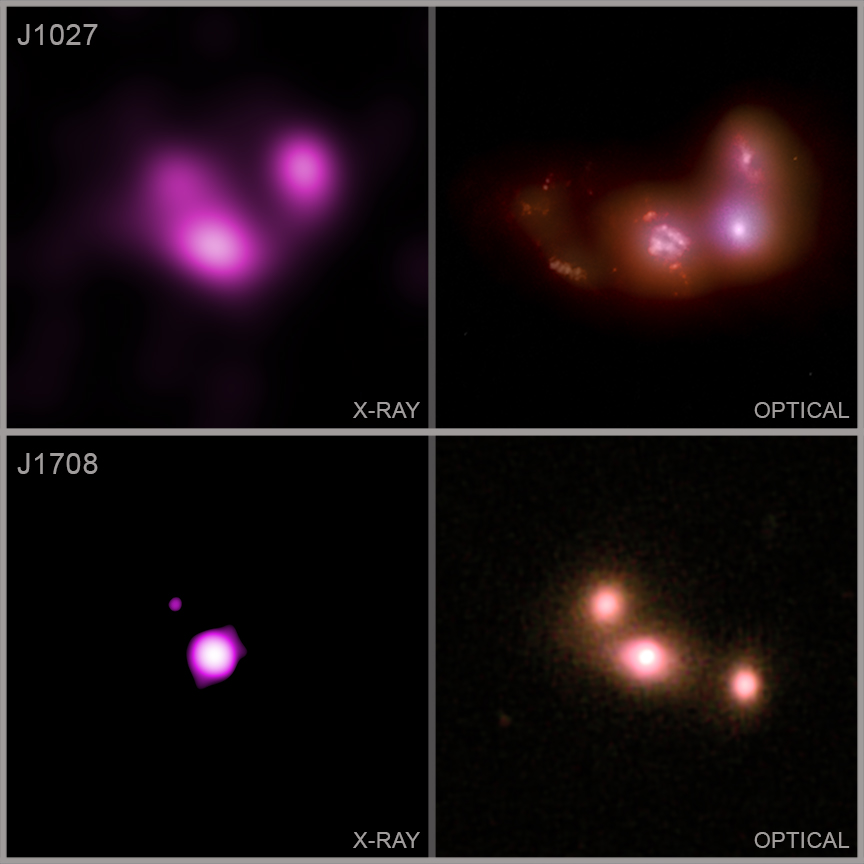This new study helps reveal what happens to supermassive black holes when three galaxies merge together. This result, which used data from NASA’s Chandra X-ray Observatory and several other telescopes, tells astronomers more about how galaxies and the giant black holes in their centers grow over cosmic time.
Galaxy mergers can occur when two (or more) galaxies collide. They are the most violent type of galaxy interaction. The gravitational interactions between galaxies and the friction between the gas and dust have major effects on the galaxies involved. The exact effects of such mergers depend on a wide variety of parameters such as collision angles, speeds, and relative size/composition, and are currently an extremely active area of research.
Even though there were many studies before studying the mergers between two galaxies, this was the first time astronomers studied when triple systems come together and how they affect the supermassive black holes in their centers. These triple galaxy mergers were first identified by sifting through data from the SDSS and NASA’s WISE mission and then comparing the results to X-ray data in the Chandra archive. This method identified seven triple galaxy mergers located between 370 million and one billion light years from Earth.

Out of seven triple galaxy mergers, there are: one with a single growing supermassive black hole, four with double growing supermassive black holes (two of which are shown in the main graphics), and one that is a triple. The final merger of three galaxies they studied seems to have no X-ray emission detected from the supermassive black holes. This means that none of the supermassive black holes were left rapidly pulling in matter. In the systems with multiple black holes, the separations between them range between about 10,000 and 30,000 light years.
Studies of triple mergers can help scientists understand whether pairs of supermassive black holes can approach so close to each other that they make ripples in spacetime called gravitational waves. The energy lost by these waves will inevitably cause the black holes to merge.
Two papers describing this work have recently been accepted for publication in The Astrophysical Journal and preprints are available here and here. Source: chandra.harvard.edu.
